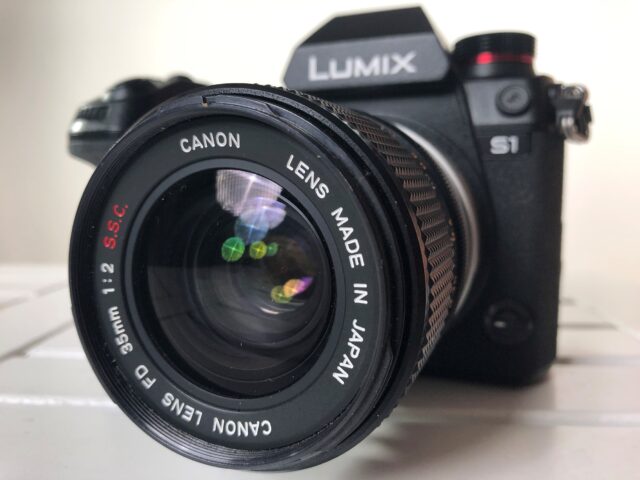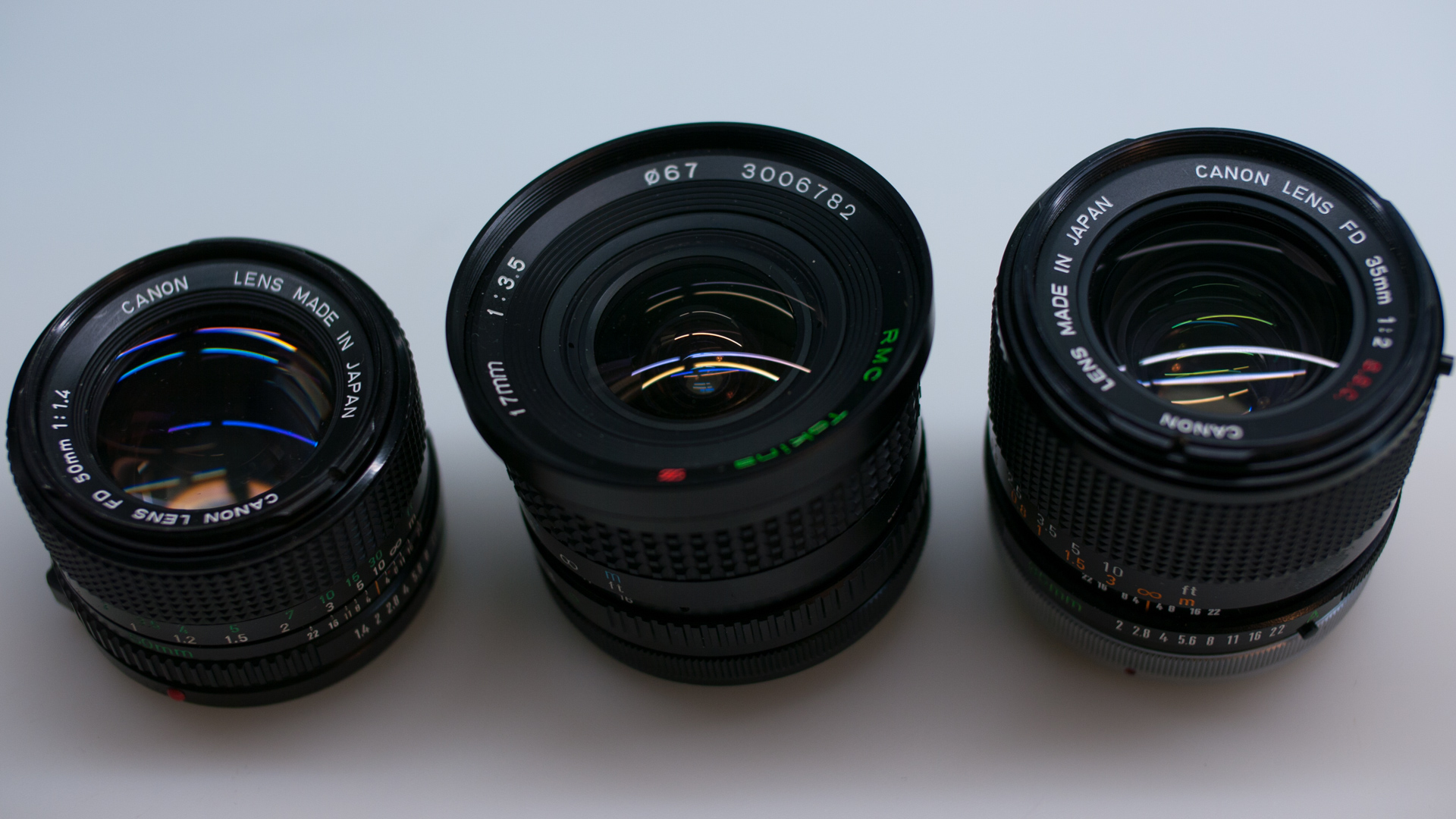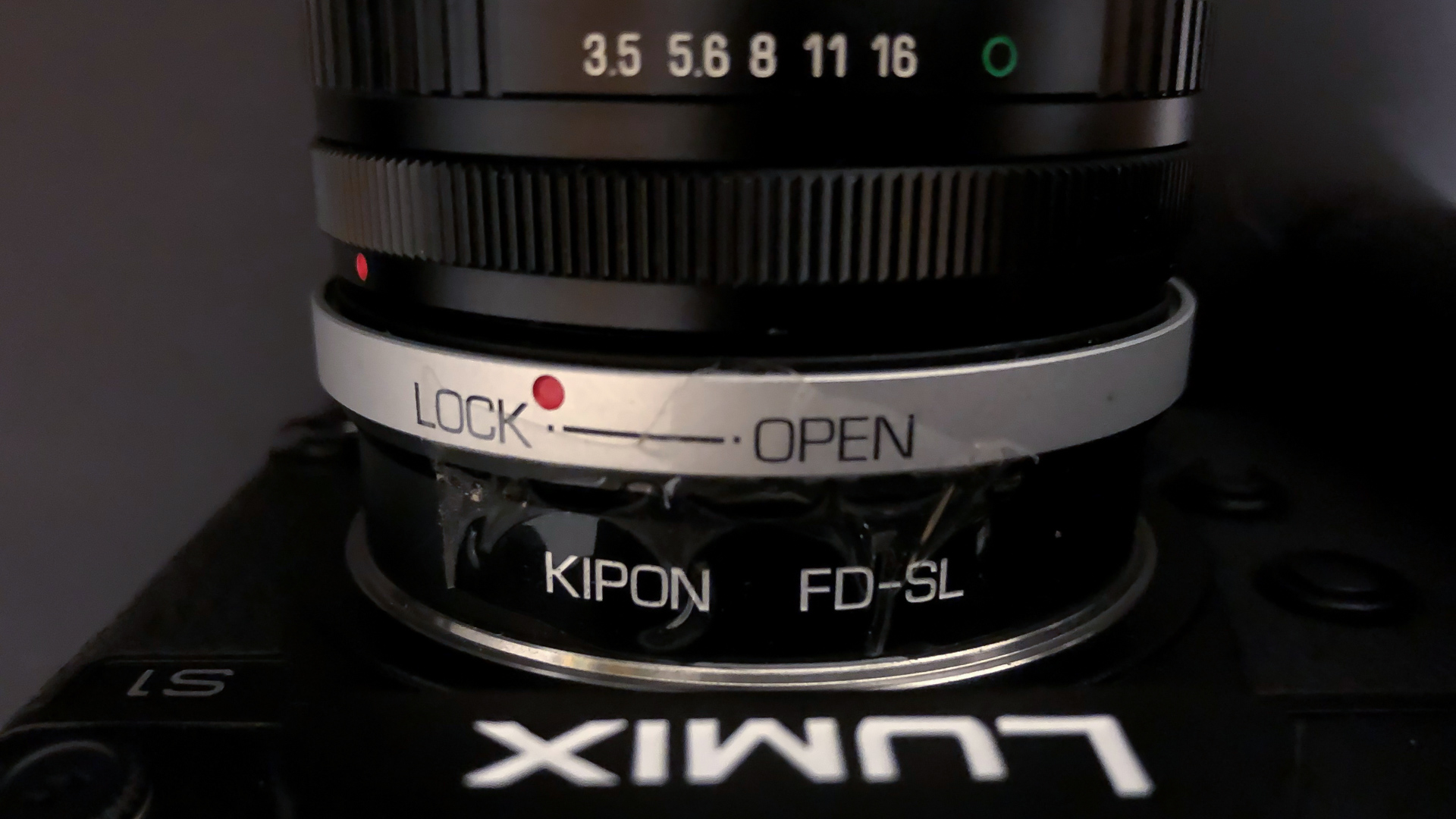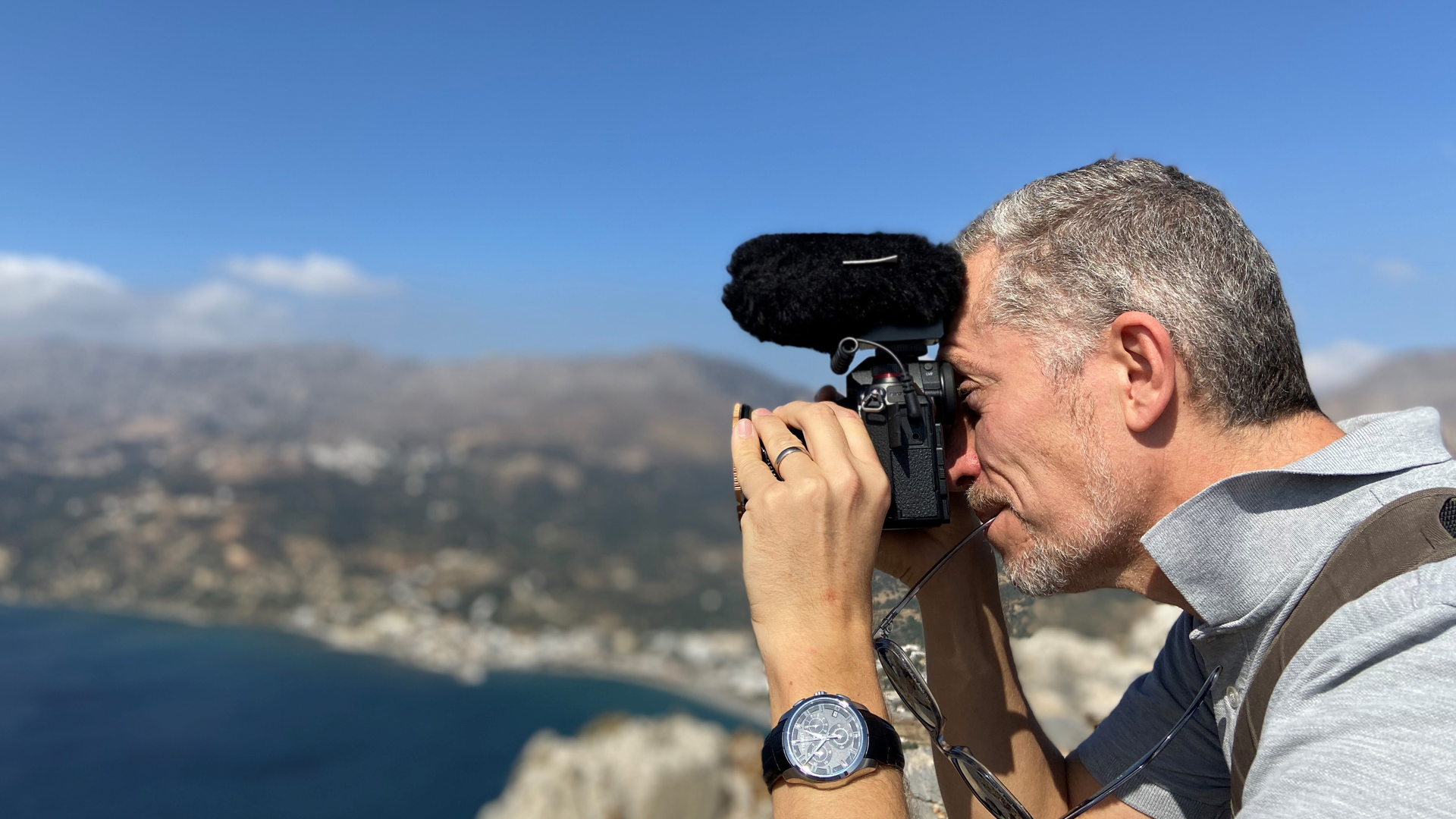Panasonic S1 & Canon FD lenses – Full Frame, 10-bit Recording Kit Under $3500
Music Courtesy of MusicVine.com Get 25% off your next music license with code C5D25 (valid for one use per customer)
Are you playing with the thought to enter into the 10-bit full frame filmmaking world but think it’s prohibitively expensive? Here is a sub $3500 suggestion. If you are willing to invest money and time, the combination of working with the Panasonic S1 equipped with Canon’s FD lenses is fun and a good reason to collect some older items too.
If you are like me, an enthusiast hobbyist who is digging the full frame look but don’t want to go back to 8-bit codecs, then I’m sure we are sharing the same dilemma. I’ve started filming 10 years ago with a Panasonic GH1 and later moved to the original BMPCC camera but the full frame “look” always fascinated me and 8 vs 10-bit became a deal breaker when choosing my next camera.
My Wish List When Considering a Camera
- a full frame sensor camera to get this creamy shallow depth of field with fast primes
- a robust 4K 4:2:2 10-bit internal codec
- the cam has a LOG image picture profile that provides good dynamic range and is flexible enough for grading in post
- in body image (sensor) stabilization (IBIS) would be great
- the audio department should provide good sound quality with a headphone output, of course
- a good viewfinder and/or screen is mandatory
- decent battery life
- lenses should cover wides and moderate tele and should be fast (below f4, ideally f2) – otherwise you would defy the purpose to go for full frame
- in addition, the lenses should provide robust mechanics, a buttery smooth focus throw to allow for precise manual focus adjustment with hard stops at close and infinity focus
- I don’t like messing with rigs, external recorders, HDMI cables, and all the auxiliary stuff and need a compact footprint
- As a hobbyist, I just don’t want to spend more than $3500 all in all
Sounds tricky, right? Is there a filming beast that could fulfil my wishes?
Which Camera to Pick?
Just last year one would have to compromise on a lot of items in the above list. Not so in 2019.
This year has seen the release of full frame cameras like the NIKON Z 6, Panasonic S1, the Panasonic S1H, the SIGMA fp, and Leica SL2. Super35 cameras like the ZCAM E2-S6 equipped with speed booster for the “full frame look” (only if you don’t pick the EF mount version) are an option too.
You may ask yourself, why have I not included Micro Four Thirds cameras on the list?
Well, here’s the math: in order to match full frame lenses at an f-stop of 2, you would have to go for fast f/1 lenses on micro four thirds (crop factor 2x), like the Voigtlaender 17mm f0.95 (about 500€ used), or the Voigtlaender 25mm f0.95 (500€ used). Those lenses will help in achieving the same look. Another option will be the use of speed booster (e.g. 0.71x) in combination with lenses at f1.4.
So there is a solution for “look”, but you would still shoot with a sensor having much smaller photosites (pixel pitch) which would hamper the dynamic range and lowlight capabilities of our combo.
Hence, we want to benefit from the large full frame sensor, and the only camera that ticks all the above boxes is the Panasonic S1 – the SIGMA fp lacks the headphone jack and IBIS, the S1H, Leica SL, and ZCAM are too expensive (like other options not listed above), and the NIKON Z 6 only provides 10-bit LOG via external recording. On the subject of Panasonic S1, If you would like to learn more about it, please head to our articles: Panasonic S1- The new Lowlight King?, Panasonic S1 V-Log – First Look and Sample Footage, and, Panasonic LUMIX S1 – Rolling Shutter Test.
So, a Panasonic S1 with the V-Log upgrade and a 64 GB SD Card (55 minutes of recording UHD 4:2:2 10-bit 24fps) will set you back about $2,498.
Lenses – My choice
Now it gets expensive, right? Full manual, fast primes with great mechanical and optical qualities…well, not if you are entering the world of the cost-effective Canon FD lenses.
Below you can see my selection of FD lenses:
- Tokina RMC, 17mm, f3.5 lens – $165
- Canon FD 35mm, f2 (any of the variants is great) – $165
- Canon FD 50mm, f1.4 – $66
Total: about $396. Of course, a bit of patience is required to search through, for example, eBay, and get the deal. If you don’t want to go ultra wide (like the 17mm above) you can also go for a Canon FD 24mm f2 for about the same money. If you need a bit more tele throw in a Canon FD 135mm f2.8 for $88.
All of the above lenses are 30 to 40 years old, are moderately flare resistant and provide very good resolution. The 17mm becomes sharp at f5.6, the 35mm f2 is sharp already wide open and the 50mm stopped down to f2 as well (at night contrasts are generally higher, so even f1.4 works well).
Personally I really dig the look of these lenses – they do not have this super contrasty, super-resolution look of modern lenses which means they nicely remove the “digital edge” of modern cameras.
Flares are controlled well by the 17mm and the 35mm lens, the 50mm flares a lot more when shooting directly into the sun – flares are a bit blueish (as you also can see on the left-hand side above).
And, they are very light and small – all the three lenses above weigh 870 grams in total!
If the shot requires a longer reach, you can use the Panasonic S1 in APS-C mode (4K 4:2:2 10-bit as well) which provides a 1.5x crop. Hence, your 50mm lens at f2 becomes equal to a 75mm lens at f2.8.
Canon FD to L – Mount Adapter
What you need is a mechanical adapter to adapt these lenses to the L-Mount of the Panasonic S1. Here is one from Kipon that I used ($105), but you can also find cheaper ones although performance can vary.
You will also need a variable ND filter if you want to shoot wide open on a sunny day. I am using mostly the Heliopan variND filter with an 82mm size, which sets you back $309 plus $10 for a set of step-up rings (for our lenses we need 52mm, 55mm, and 67mm to 82mm step up rings).
Other brands work as well of course, like the Polar Pro VariND 6-9 for example (which I had on the 35mm lens).
To activate the in-body image stabilization when using mechanic adapters on the Panasonic S1, you just have to enter the right focal length of your lens when firing up the camera:
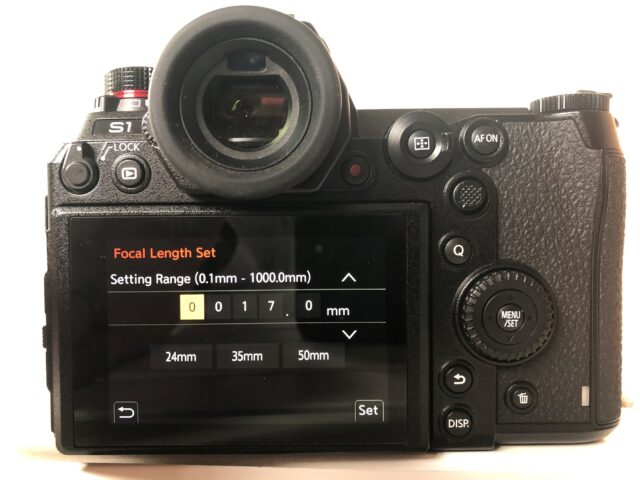
If no electronic contact to a lens is established, the Panasonic S1 asks upon start up to enter the focal length of your lens – a nice feature! Image credit: Gunther Machu
Looks like we haven’t reached our $3500 barrier yet – then let’s include a Rode Videomic Pro for $170.
Total: $3000 to $3488 – depending on which adapter and VariND filter you choose.
Panasonic S1 Sample Footage – Ochi Day
To show you the qualities of our sub $3500 combo, I shot a little piece on Ochi day (28th of October). Ochi Day (“Anniversary of the No”) is celebrated throughout Greece and Greek communities around the world – it celebrates the rejection by Greece of the Italian dictator Mussolini’s ultimatum in 1940 to occupy Greek territory or otherwise face war.
It was allegedly answered with a single laconic word: “no”.
I colored all the V-Log clips in DaVinci Resolve using the Nicest 709 33 E-E.cube LUT from the official Panasonic Varicam LUT library. In addition, I added an S-Curve to the clips to get those nice, deep blacks. However, I had to tame down the blues as they felt very oversaturated. This issue seems to be fixed with the latest Panasonic S1 firmware though.
This way colors are very close to reality – and I like it punchy :-). In any case, colors are subjective and you can push the footage around in any way you want, of course.
There’s only one point of criticism on the image from the Panasonic S1: somehow it feels too clean, lacking the organic feeling of other cameras (like the Blackmagic and Leica cameras) – it feels like there is too much in-camera noise reduction going on, which cannot be turned off.
Final thoughts
What is easily overlooked when you talk about cameras is usability. This combo just works – the viewfinder is great, battery life is great, boot-up time is super fast – nothing gets in your way if you want to quickly grab a shot. For me, that’s how it should be. Quite amazing, our package – isn’t it? Exciting times to be a filmmaker…
Music courtesy of MusicVine.com – Get 25% off any Pay-Per-Use license with code C5D25 (valid for one use per customer).
Any other hidden lens gems out there? I’m very curious to read your suggestions in the comments section below!
